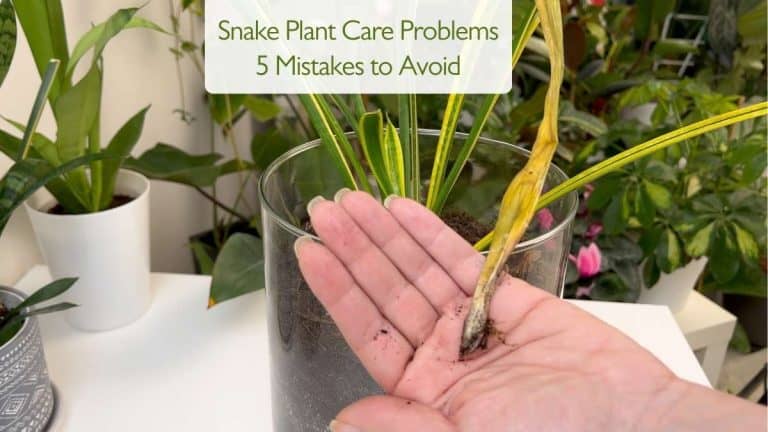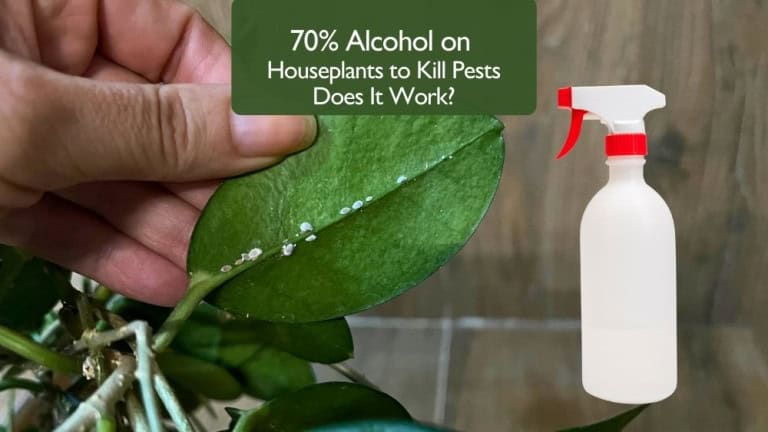Snake Plant Problems: 5 Common Mistakes to Avoid for Healthy Plants
Snake Plants (Sansevieria) are among the easiest houseplants to grow, yet many plant owners still encounter frustrating Snake Plant problems that hinder their growth and health. If your Snake Plant looks stretched, yellowed, or stopped growing, it may be due to some common care mistakes.
In this article, I will guide you through the five most frequent Snake Plant problems, explain why they occur, and share practical tips to help your Snake Plant flourish.
If you prefer a visual guide, you can also watch my detailed video below, where I cover these tips step-by-step for Snake Plant Problems:
1. Overwatering: The Most Common Snake Plant Problem
Overwatering is the number one cause of Snake Plant problems. These plants naturally store water in their thick, fleshy leaves, so they don’t require frequent watering, especially during cooler months.
If the soil remains wet for too long, roots can suffocate and develop root rot, a serious condition that can kill your plant.
When I moved my Snake Plant to a darker spot, I noticed the soil dried much slower. This led to soggy conditions perfect for root rot, causing the leaves to yellow and wilt.
Signs of overwatering include:
- Yellow leaves that feel soft or mushy
- Wilting despite wet soil
- A foul smell from the soil
- Older leaves dropping prematurely
To avoid overwatering, check the soil moisture before watering by sticking your finger a few inches in. If it’s still damp, wait a few more days.
Water deeply but infrequently, and always let excess water drain out of the pot. Avoid letting the plant sit in standing water.
If you suspect root rot, carefully repot the plant into fresh, well-draining soil and trim any rotten roots.
For more detailed advice on watering and general summer care adjustments for your houseplants, check out my comprehensive Summer Tips for Houseplants article.
2. Poor Drainage and Wrong Soil Mix Lead to Snake Plant Problems
Even with good watering habits, poor drainage and unsuitable soil can cause major Snake Plant problems.
Using pots without drainage holes traps excess water and creates conditions for root rot.
Always choose pots with drainage holes and avoid overly large containers. Smaller pots encourage healthier root systems and more side shoots.
Repot your Snake Plant every two years or when it becomes root-bound, using a pot only one size bigger.
For soil, a mix designed for succulents or cacti—light, gritty, and well-draining—is best. You can mix regular potting soil with perlite or sand.
Avoid heavy, moisture-retentive soils that hold water too long.
3. Yellow or Discolored Leaves Indicate Snake Plant Problems

Yellowing leaves can be a natural sign of aging, but when multiple leaves turn yellow or brown, it signals underlying Snake Plant problems.
Causes include:
- Overwatering causing root suffocation
- Exposure to cold drafts or temperature stress
- Nutrient deficiencies leading to pale foliage
Soft, mushy yellow leaves will not recover and should be trimmed to keep the plant healthy.
Firmer but discolored leaves can improve with proper watering, light, and fertilization.
4. Incorrect Light Conditions Are a Common Cause of Snake Plant Problems
While Snake Plants tolerate low light, insufficient light causes poor growth and stretched, pale leaves—a frequent Snake Plant problem.
Too much direct sunlight causes leaf burn, resulting in brown, crispy spots.
The ideal light for Snake Plants is bright but indirect—filtered sunlight or a few hours of moderate light daily.
If natural light is limited, consider supplemental grow lights, especially in winter.
When changing light conditions, transition slowly to prevent shock.
5. Cold Temperatures and Drafts Cause Leaf Damage and Other Snake Plant Problems
Snake Plants prefer warm, stable environments and suffer when exposed to cold temperatures below 50°F (10°C) or drafts.
Cold-stressed plants may develop soft, wrinkled, or discolored leaves and become more susceptible to rot and disease.
Avoid placing your Snake Plant near drafty windows, doors, or air conditioning vents.
Remove damaged leaves and allow the soil to dry before watering if you suspect cold damage.
My Best Snake Plant Care Routine for Avoiding Problems
My healthiest Snake Plant sits near a west-facing window with bright indirect light and some gentle afternoon sun.
I water only when the soil is nearly dry, usually every 2-3 weeks, less in winter.
It’s planted in a succulent soil mix with perlite for drainage and lives in a pot with drainage holes.
This balanced care keeps it growing vigorously and free from common Snake Plant problems.
For more detailed guidance on how to water your Snake Plant correctly and avoid common watering mistakes, check out my video Watering Tips: How, When & How Much to Water” below. This video covers everything you need to know to keep your plant perfectly hydrated and healthy.
Final Thoughts on Avoiding Snake Plant Problems
Understanding and addressing these common Snake Plant problems helps you maintain a beautiful, resilient plant in your home or office.
Have you experienced these issues or have tips to share? Please leave a comment!
Don’t forget to subscribe for more expert plant care advice and tutorials.
Happy growing!
Explore More Music for Your Plants & Stay Connected!
Check out my Playlist: Music for Plants and find the perfect tunes to help your plants and yourself thrive.
Don’t forget to visit my YouTube Channel Plant House & Garden and subscribe — your support means the world to me!
Connect with me on social media for more plant care tips and music updates: Instagram | Facebook | X | Pinterest | Reddit | TikTok
Love plants? Love music? Don’t miss out on new updates — hit subscribe and follow now to keep your plants happy and your space vibrant!







